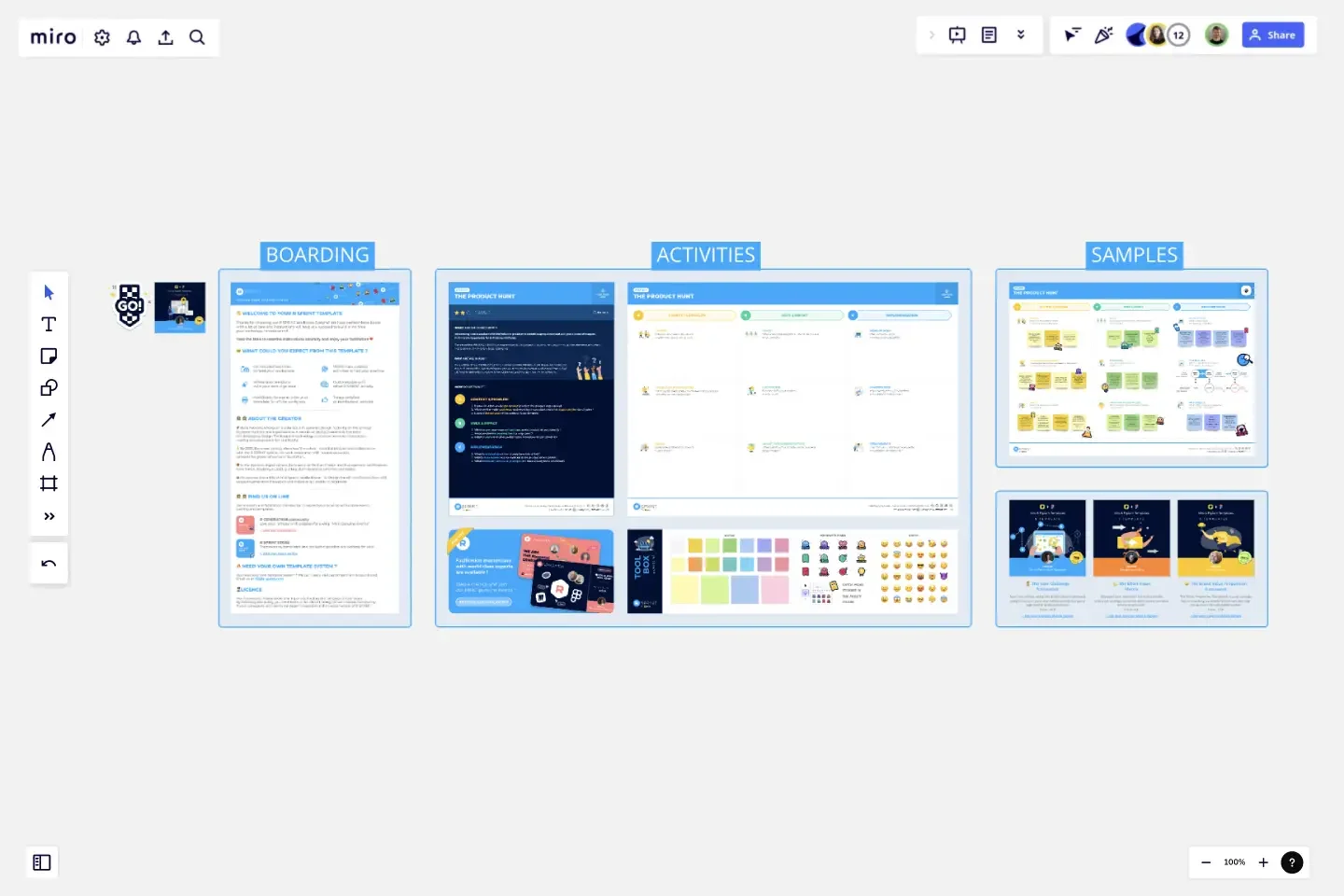The Product Hunt
Introducing a new product with a problem-oriented scoping document will make sense for the team that will be in charge to provide solutions. This PRODUCT BRIEF produced aims to shed light on the reasons why it is important to work on this subject, to provide elements of context, and to define the problem to be addressed.
WHY ARE WE IN FOR ?
The purpose of the PRODUCT BRIEF is to align all stakeholders on the need, delimiting the scope of intervention and framing the process to be implemented. Understanding the context will help to define the problem to be addressed and the objectives to be achieved.
WHO SHOULD USE THIS ?
Facilitators, Marketing Teams, Product Managers, Customer Support/Service Teams, Sales Teams, User Experience (UX) Designers, Customer Success Teams, Business Analysts, Content Creators, Market Researchers, Brand Managers, Customer Insights Teams, Innovation Teams, E-commerce Teams, CRM (Customer Relationship Management) Teams, Business Development Teams, Quality Assurance/Testing Teams, Leadership and Executives, Cross-functional Teams.
HOW DO WE RUN IT ?
This workshop is designed to be driven in 30 to 60 minutes following the instructions :
A - CONTEXT & PROBLEM
Explain in a few words the context in which the product will respond,
What major problems/opportunities does this product address and what are the opportunities?
Express the purpose of the product to be designed.
B - USER & IMPACT
Which targets and which primary users of the product do you identify?
What are the first assumptions to help users?
What impacts and performance indicators do you imagine?
C - IMPLEMENTATION
What functional scope has already been identified?
Which stakeholders will be mobilized on the product development?
What technical/structural prerequisites have already been identified?
EXPERIMENT THE R SPRINT DIFFERENCE
We have crafted those boards with a lot of care and instructions will help you succeed in no time at your workshop, remote or not.
WHAT COULD YOU EXPECT FROM THIS TEMPLATE ?
On the shelf activities to feed your workshops,
White label template with your own logo area,
A4/A3 ratio format to print your template for offline workshop,
World class curated activities to fuel your practice,
Customisable with other R SPRINT activity,
7 days satisfied or reimbursed policies on our store.
Take the time to read the instructions carefully and enjoy your facilitation.
This template was created by RSPRINT for MIRO.
Get started with this template right now.
Thematic Roadmapping (Vision & Strategy)
Works best for:
Roadmap, Planning, Mapping
The Thematic Roadmapping (Vision & Strategy) template empowers organizations to align their vision with actionable strategies. By identifying key themes and strategic objectives, teams can develop a roadmap that guides decision-making and resource allocation. This template facilitates cross-functional collaboration and ensures that initiatives are aligned with overarching goals, leading to more focused and impactful execution.
Action Plan Template
Works best for:
Education, Project Management, Project Planning, Kanban
Why create an action plan? Long-term business strategies and goals are only good if you can make them a reality—by accomplishing every small task along the way. An action plan lists those tasks and lays them out in clear detail. It helps you keep everything in order, make sure nothing is missed, and get stakeholders on the same page to complete a project quickly and effectively. This template will help you write an action plan that’s SMART: Specific, Measurable, Actionable, Realistic, and Time-bound.
HEART Framework Template
Works best for:
Desk Research, Project Management, User Experience
Happiness, Engagement, Adoption, Retention, and Task Success. Those are the pillars of user experience — which is why they serve as the key metrics in the HEART framework. Developed by the research team at Google, this framework gives larger companies an accurate way to measure user experience at scale, which you can then reference throughout the product development lifecycle. While the HEART framework uses five metrics, you might not need all five for every project — choose the ones that will be most useful for your company and project.
The 4-Step Retrospective
Works best for:
Retrospectives, Agile Methodology, Meetings
The 4-Step Retrospective template offers a simple yet effective framework for conducting retrospectives. It provides steps for reflecting on what went well, what didn't go well, what could be improved, and action planning. This template enables teams to systematically review past iterations, identify areas for growth, and implement actionable improvements. By promoting a structured approach to reflection and improvement, the 4-Step Retrospective empowers teams to drive continuous learning and enhancement effectively.
Sustainable Product Innovation Board
Works best for:
Product Management, Planning
The Sustainable Product Innovation Board template supports sustainable product development practices. By integrating sustainability criteria into product ideation, design, and implementation processes, this template fosters eco-friendly product innovation. With sections for evaluating environmental impacts and setting sustainability goals, it enables teams to create products that minimize ecological footprints and promote social responsibility. This template serves as a framework for driving sustainable business practices and meeting consumer demands for environmentally conscious products.
Fishbone Diagram for Process Improvement
Works best for:
Planning, Strategy
Process improvement is key to enhancing efficiency and productivity. The Fishbone Diagram for Process Improvement template helps you identify the root causes of process inefficiencies. Categorize potential causes into areas such as workflow, resources, technology, and personnel. This structured analysis enables your team to systematically explore and address issues, streamlining processes and boosting overall productivity.
